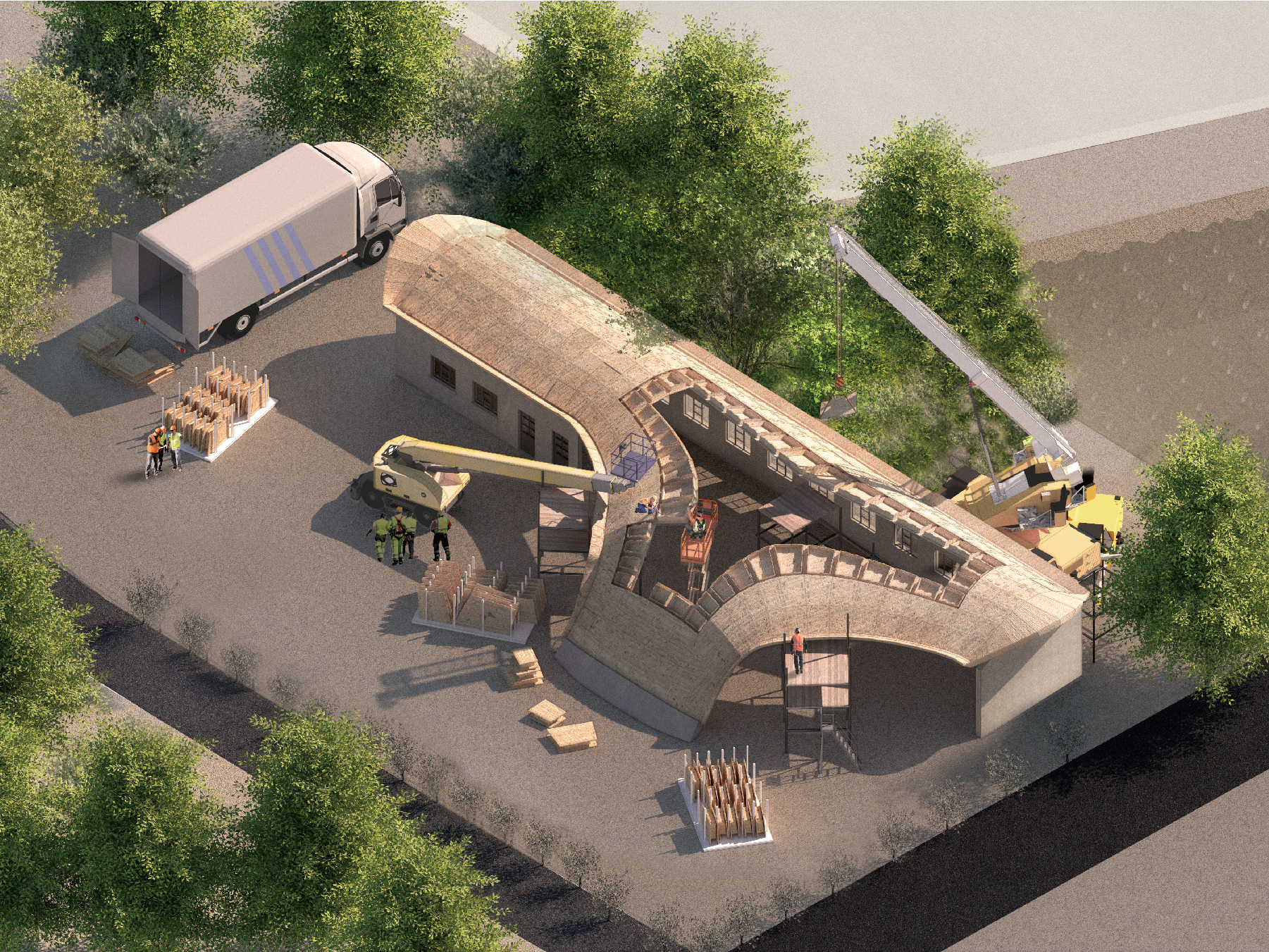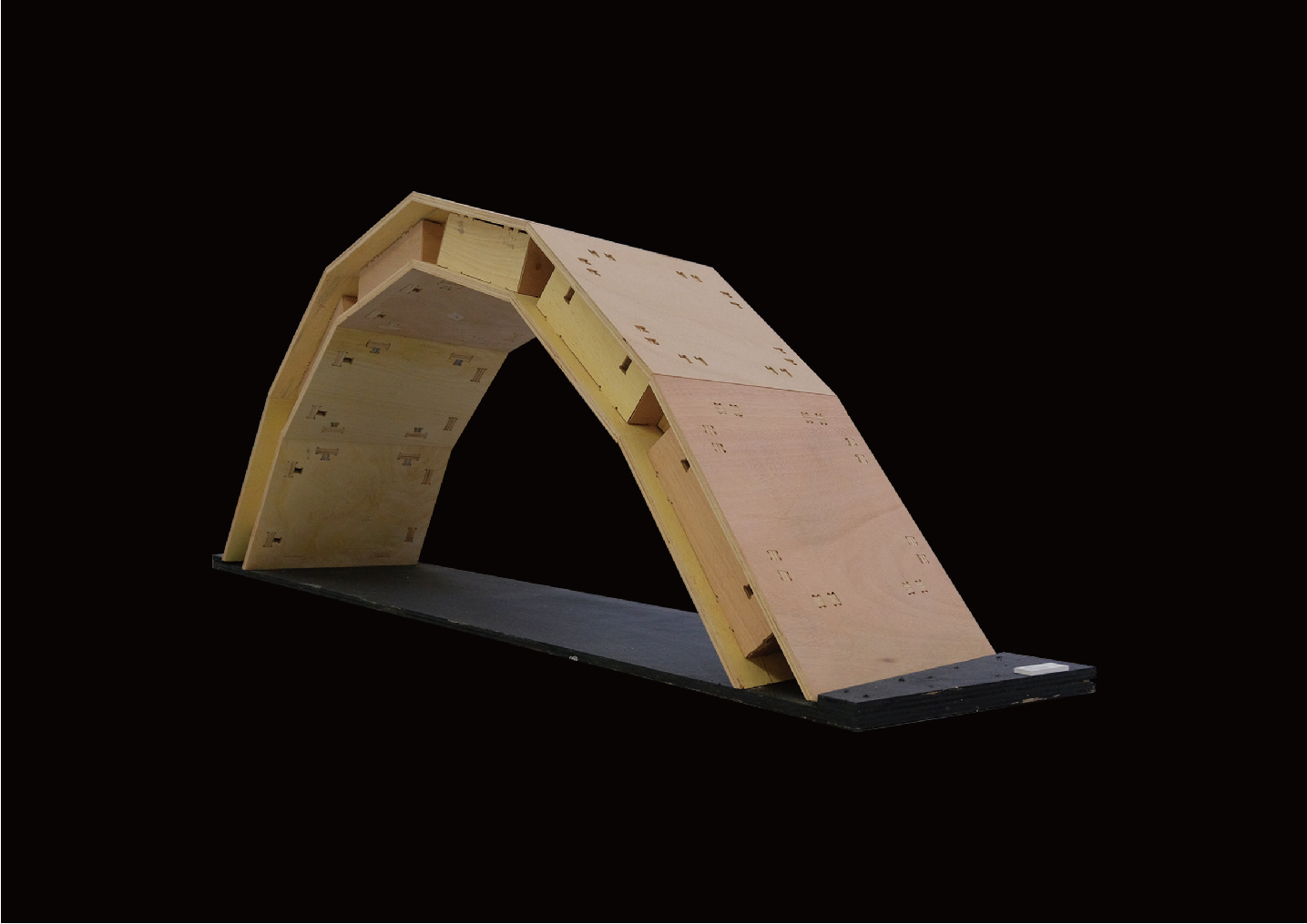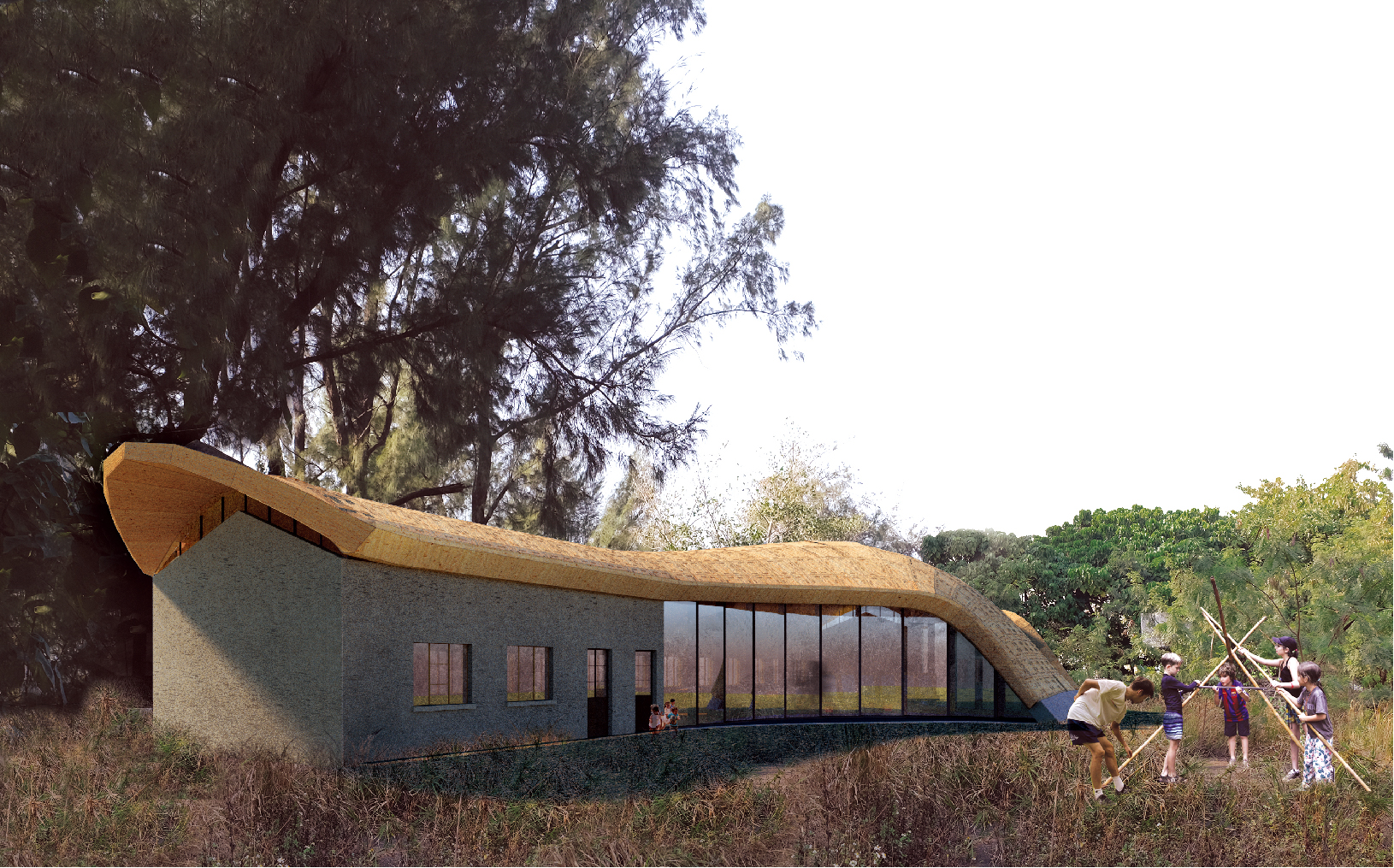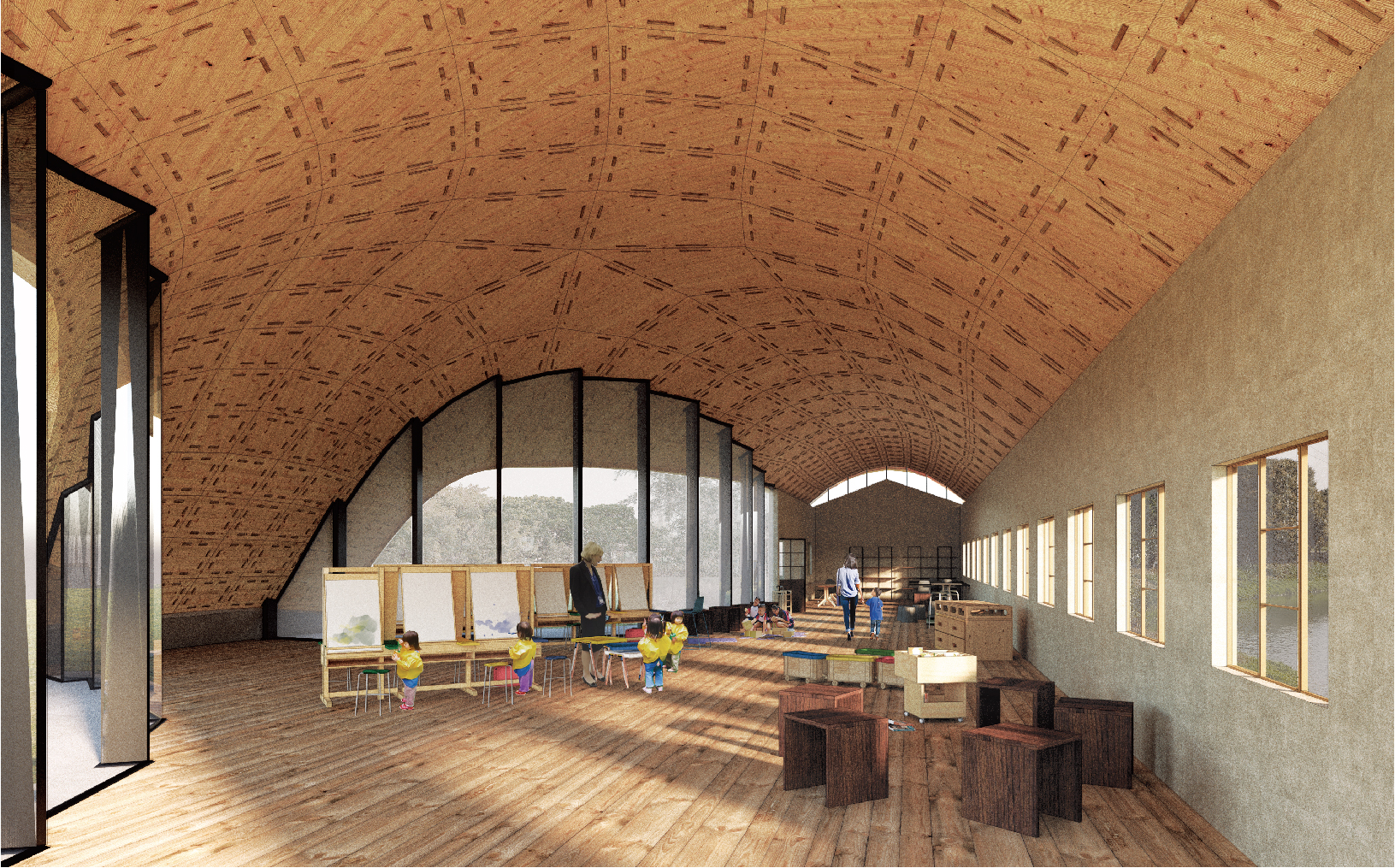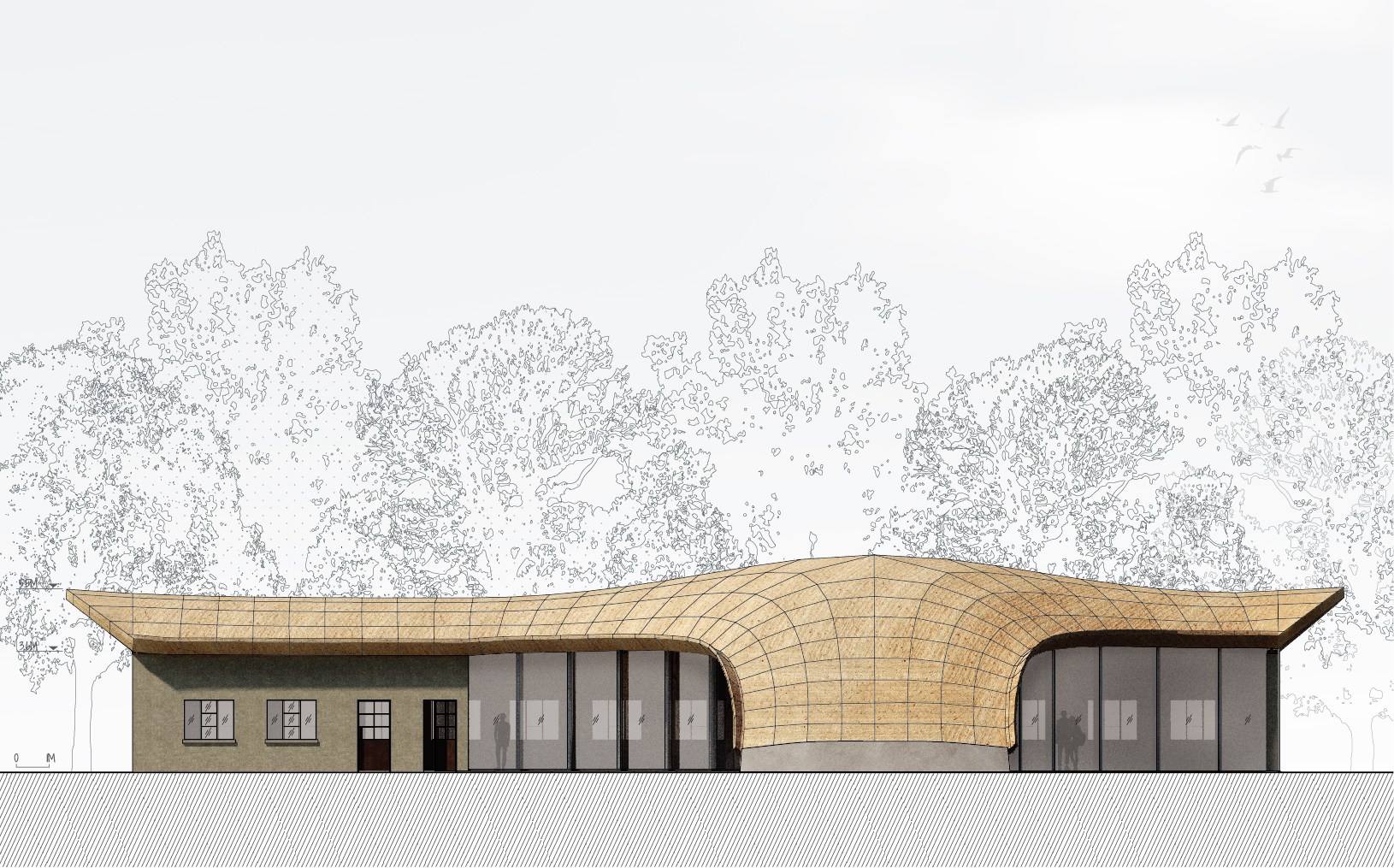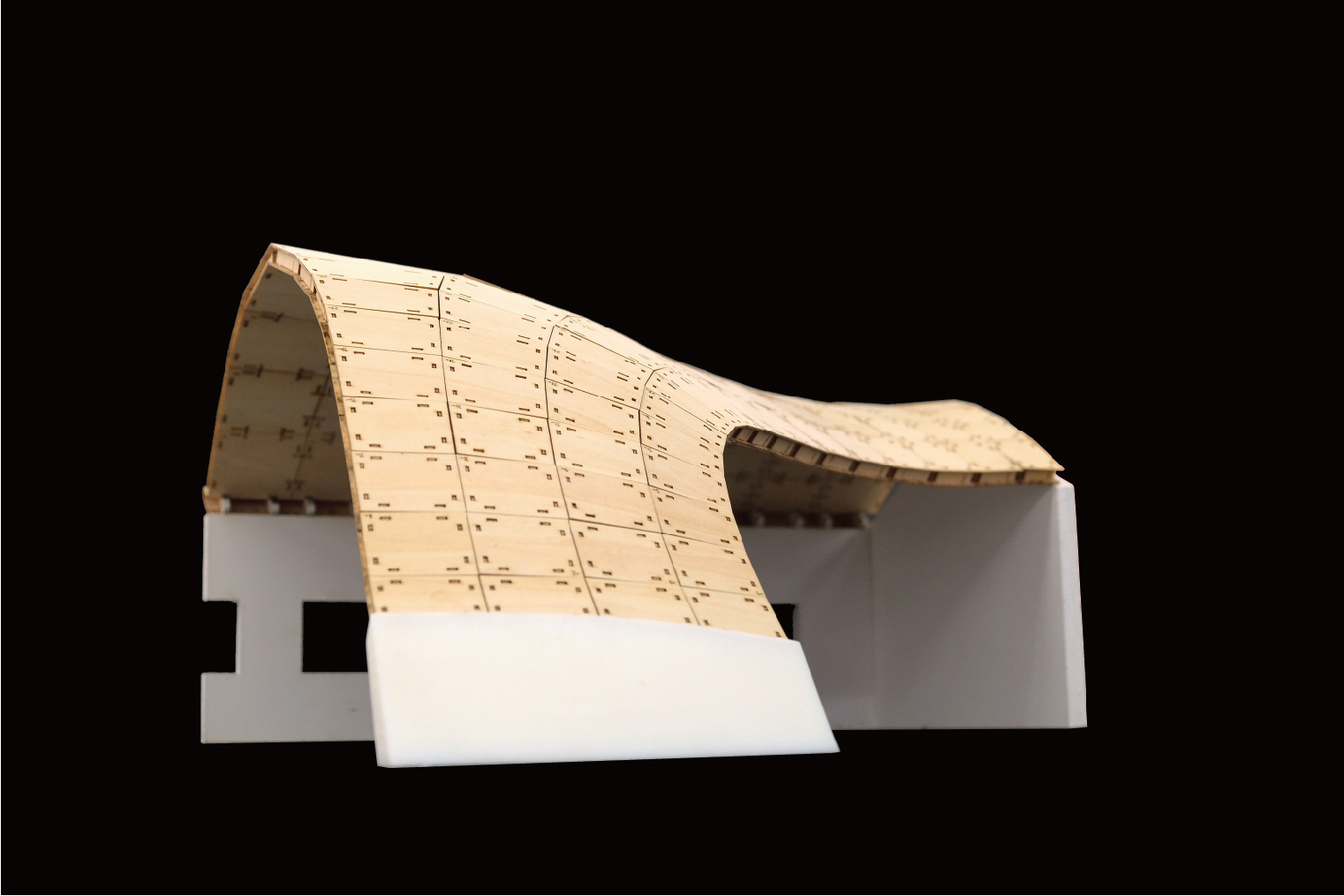為應對香港郊外的廢棄低層建築,“簡單組裝”採用最新科技來設計和製造優雅及環保的木質屋頂結構,為舊建築帶來新活力,呈現創新的方法來活化本地的老建築。
“簡單組裝”使用創新的低碳材料,如層錯壓木材 (CLT)。 CLT 是一種可再生的工程結構木材產品。與混凝土、磚塊或鋼材等傳統建築材料相比,它所含的碳和生產能源要少得多。 這項目的設計和製造系統採用計算程序工作流程,它取決於CLT 和建築形態、結構、材料和物化的互相關聯邏輯。 最新的數碼技術有被采用來優化幾何形狀和提高空間性,同時減少材料使用和能源消耗。
為應對建築行業的人口變化,系統結合廣泛應用的 3 軸電腦數值控制 (CNC) 銑床與人手組裝來建造出高性能、低成本、低碳木結構。輕質木製結構是量身訂作的細木工製品。透過傳統工藝與當代數碼設計和製造工具的結合呈現出建築美學。
作為一個系統,“簡單組裝”將製造方式和施工程序置於設計核心,極大地擴展了建築師的設計權力。 從早期的概念設計階段開始,限制已被識別並轉化為驅動力。 這種方法徹底改變了典型的“設計-投標-建造”格式。 優雅的屋頂與老建築形成了一種和藹的關係,同時引入了現代和無間斷的空間延伸,為目前未充分利用的場地帶來了新生活和樂趣。
“SIMPLE ASSEMBLAGE” responds to Hong Kong’s large number of abandoned rural low-rise buildings by using latest technologies to design, fabricate, and implement elegant, environmentally sustainable wooden roof covers and enclosures that bring new life to our legacy buildings, presenting a proactive and innovation alternative approach to local heritage.
“SIMPLE ASSEMBLAGE” centres on the use of recent innovative low-carbon materials like cross-laminated timber (CLT). CLT is a renewable engineered structural timber product that embodies and requires far less carbon and production energy when compared to conventional building materials like concrete, brick, or steel. The project’s design and fabrication system adopt a computational procedural workflow that hinges on CLT and an interconnected logic of form, structure, material, and materialisation. Latest digital technologies are utilised to optimise geometries with as objective to maximise spatial potential while minimising material use requirements and energy consumption.
In response to demographic changes within the construction industry, the system develops highly-performative, low-cost, low-carbon wooden structures that are suitable for low-tech construction environments by using widely accessible 3-axis computer numerical controlled (CNC) milling machines for fabrication in combination with local manual assembly. The resulting lightweight wooden roof shell structures are an assemblage of mass-customised discrete planks and joinery. The architectural aesthetic is expressed by a combination of traditional craft and contemporary digital design and fabrication tools.
As a system, “SIMPLE ASSEMBLAGE” dramatically expands the architect’s agency and design solution space by foregrounding and placing manufacturing and construction at the core of the design process. Constraints are identified and adopted as driving forces from the early conceptual design stage onwards. This approach overhauls architecture’s typical and restrictive “design-bid-build” format. The elegant roof outcomes create a sympathetic dialogue with the preserved building they cover, while introducing a contemporary and fluid spatial extension, bringing new life and enjoyment to currently underutilised sites.
